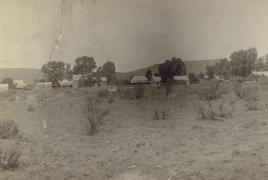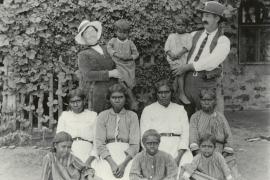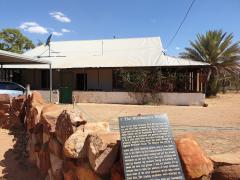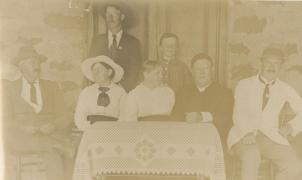There is some debate over when the first part of this building was constructed. Some have claimed that it was constructed in 1911 by Missionary Liebler and Messrs Johannsen and Crook as a stockmen’s residence.1 However, an early photo dated to 1896 shows a building at this general location, which is clearly the same building in a photograph dated to c.1916 and labelled as the house of stockman Mr. E. Munchenberg and his wife. It is likely that the core of this building is older than its outward appearance might suggest. Later, during Pastor Albrecht’s tenure, this house was lived in by stockman Phillip Henke and his family.
The floors were initially flagstone, but they were later cemented, possibly around 1917. The flagstones were used to pave the backyard. The eastern verandah was divided to form two sleepouts and a corner bathroom. New ceilings were added in 1972 and the desert oak rafters of the verandah were replaced. At that time the entire roof was realigned to form a continuous pitch.
The current building has had major modifications to its roofline, losing the hipped roof on one side perhaps following removal of the chimney, and extension towards the underground tank. The side verandahs were also added at a later date.
You will notice that the building design is square-shaped and divided into four quarters, in contrast to the earlier rectangular type layouts of the colonist building and the manse. The addition of verandahs, one of which was added in 1917, and their later enclosure in the 1940s to be used as sleepouts is a typical modification that occurred to many residences in Central Australia and particularly Alice Springs at the time.
A small outbuilding was erected in 1917 as a bakehouse. It later also served as a laundry and storage facility.
The head stockman was a very important position at the mission. The cattle operation at the mission was an important source of mission food, income and employment for Arrarnta men throughout the entire life of the mission; right up till the 1960s, when the government took over the day to day management of the community and the cattle station was discontinued.
- Heritage Conservation Services in conjunction with Ntaria Council and Domenico Pecorari & Associates Pty Ltd. 2003 Conservation and Management Plan Hermannsburg Historic Precinct
Media











